DataCore’s SANsymphony product provides virtualized and software-defined block storage to computers that need it. It is administered through a Windows application installed on computers along with the product itself. The “console” began more than 10 years ago along with the product and has been added onto over time. It is a very powerful application, and with power comes complexity. Analyzing the console presented opportunities for better access, better data presentation, a less dated experience, and a strategy that would be beneficial as new features and functions were added to the base product.
Old Design
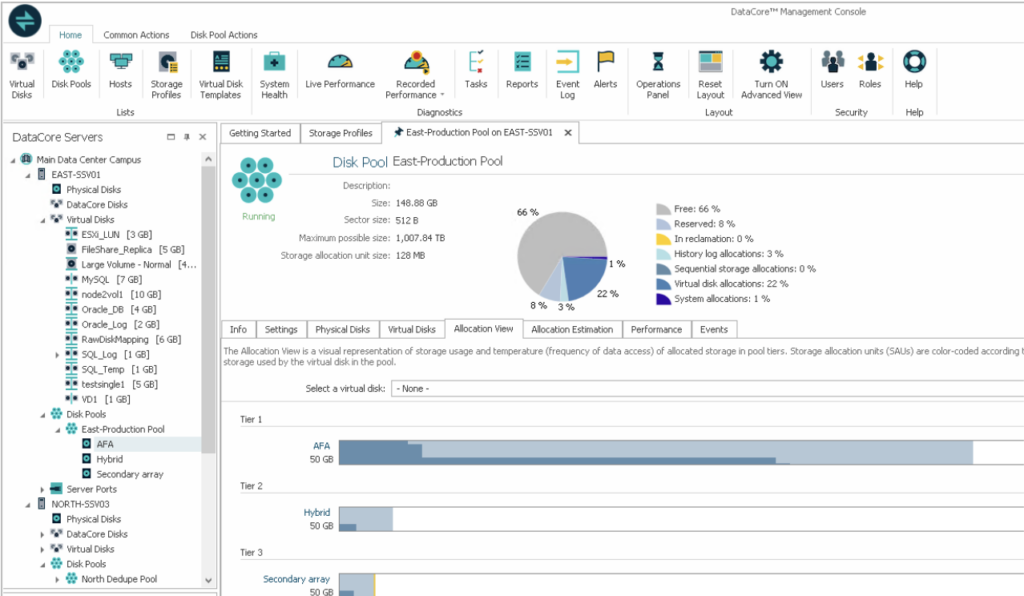
Problem Statement
- The original application had no way to identify problems in the system at a glance.
- Multiple tree hierarchies contributed to the details area, making it difficult to understand where you were at any moment.
- Actions spawned new tabs in at least two places. Cognitive load and confusion for new users is higher than necessary.
- Object-based organization did not facilitate achieving user goals. Related functions were not necessarily grouped together.
- Problems reported did not suggest how to fix them.
- Configuration often requires multiple actions on multiple objects without smart defaults.
Business Goals
- High-level goal: DataCore felt a modern web-based web console would increase sales.
- Make administration easier to access
- Increase observability of system state
- Be easier to use for new customers and provide value for existing customers
Defining Personas
- Partner & It Administrator
- Defining User Scenarios
Defining Information architecture based on User scenarios
After digging deeply into the many tasks and functions in the existing SANsymphony administration application, I proposed organizing information and capabilities based on the jobs Ian needed to get done on a typical day. This architecture would need to stay relatively stable as features were added so that Ian wouldn’t have to re-learn the interface very much.
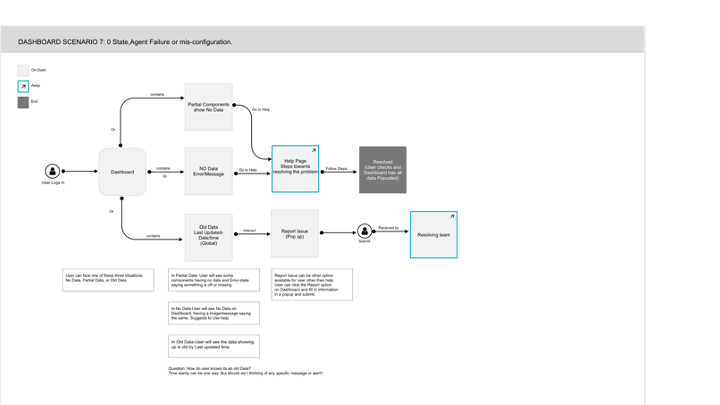
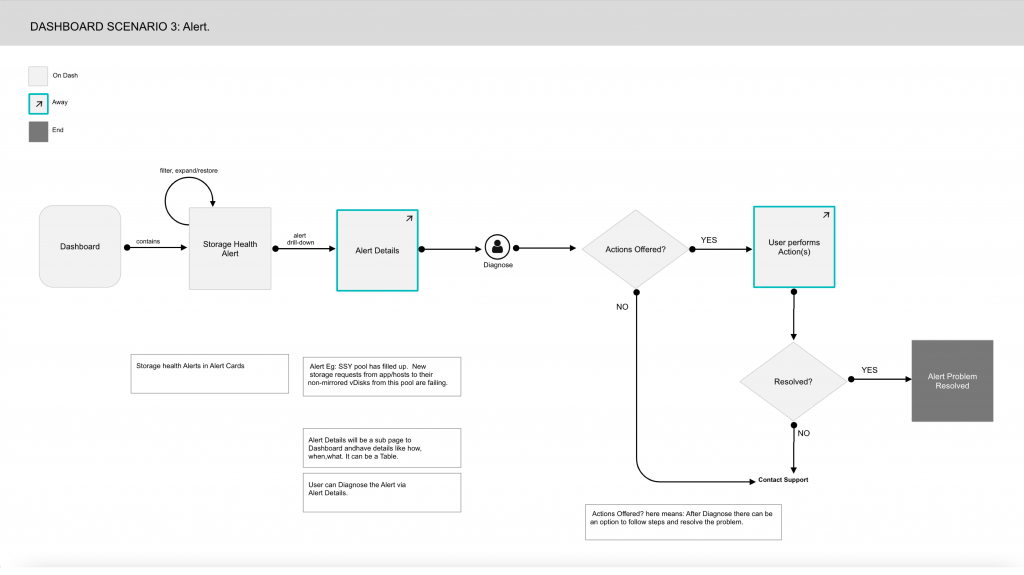
Users needed to achieve the following goals
- Is there trouble? Where? Let me get on it.
- Give new storage to a user or department in my company
- Make sure the storage I provide and the data on it is durable and available. If there is a problem, I can get it back.
- Manage and configure the computers running the SANsymphony software.
For business reasons, the new interface would be divided up into DataCore Insights Services (DIS) and the DataCore Web Console (DWC), the latter of which was initially called “MMX” in Figure 1. The high-level areas of the architecture are:
- Dashboard
- Analyze
- Prepare and Provide Storage
- Protect and Recover Data
- Manage DataCore Servers
- Configuration of the new console itselfFigure 1: Information Architecture
This architecture made its way into the main navigation of the combined DIS/DWC experience. You can learn about what DIS became by viewing the DIS Guided Tour.
Followed by Workflows and Wireframes for above defined page.
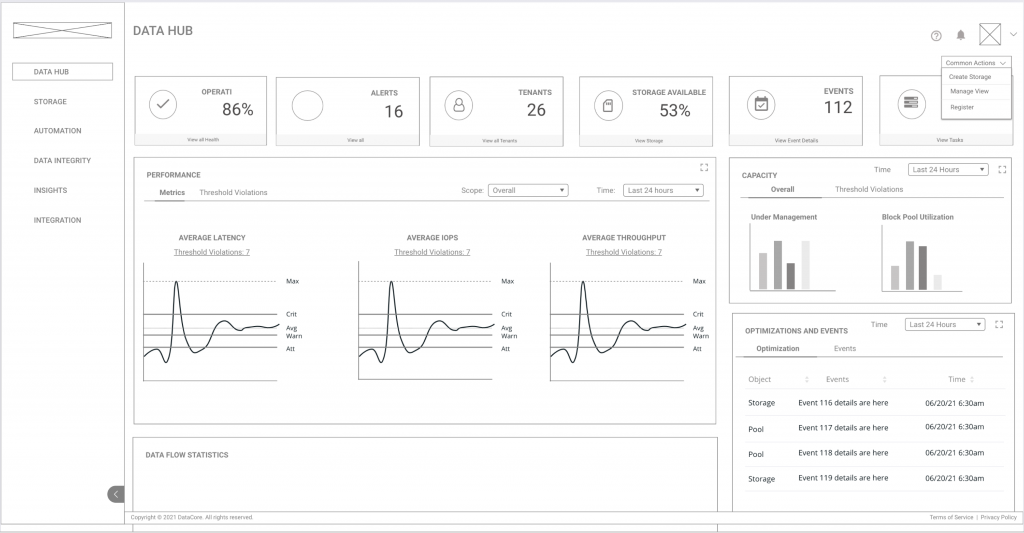

Design and Validation
First Iteration of Prototype was tested with fixed number of users and the results gave some optimizing outcome. It was also confirmed by customers that the user interface was way more easier and self explaining than previous.
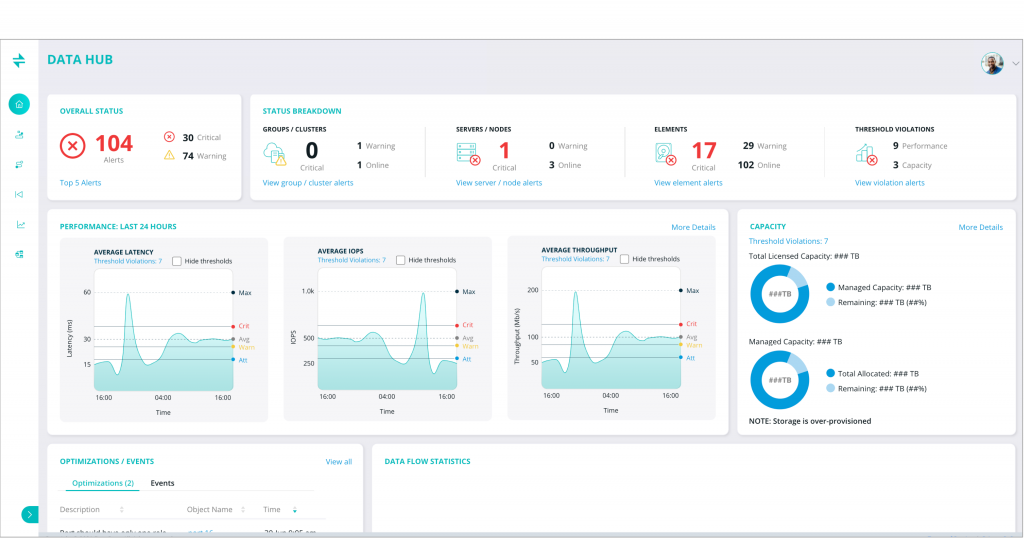
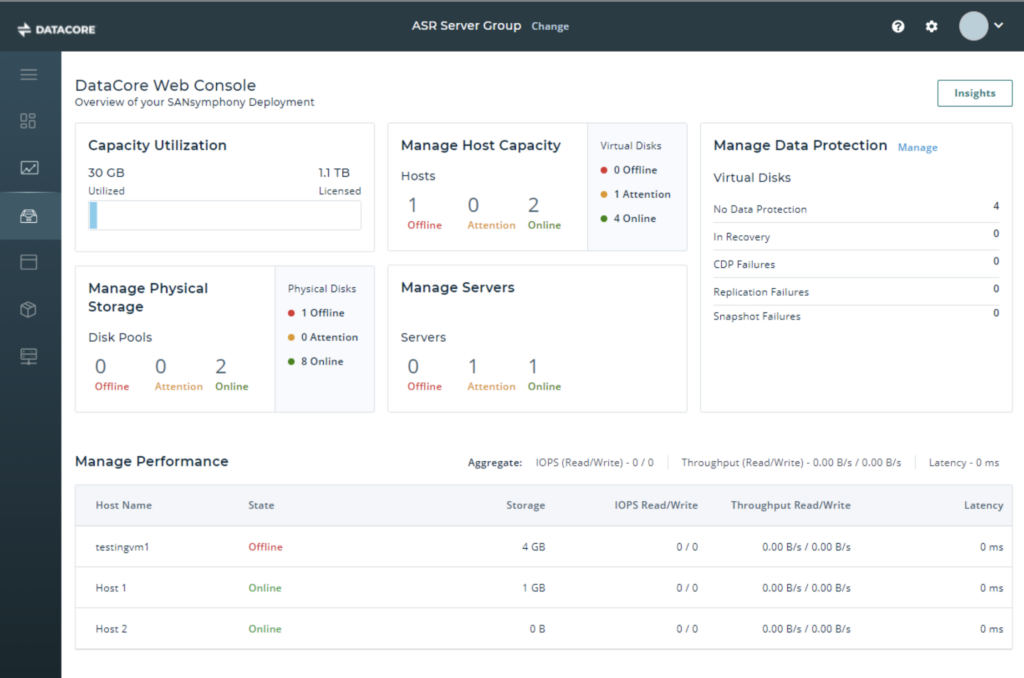
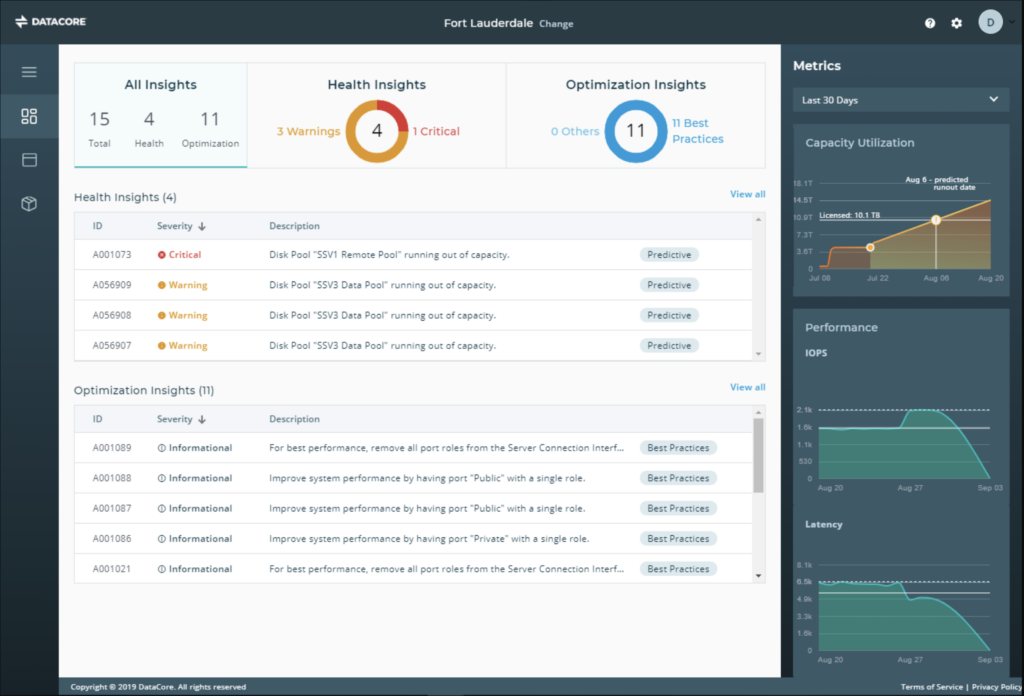
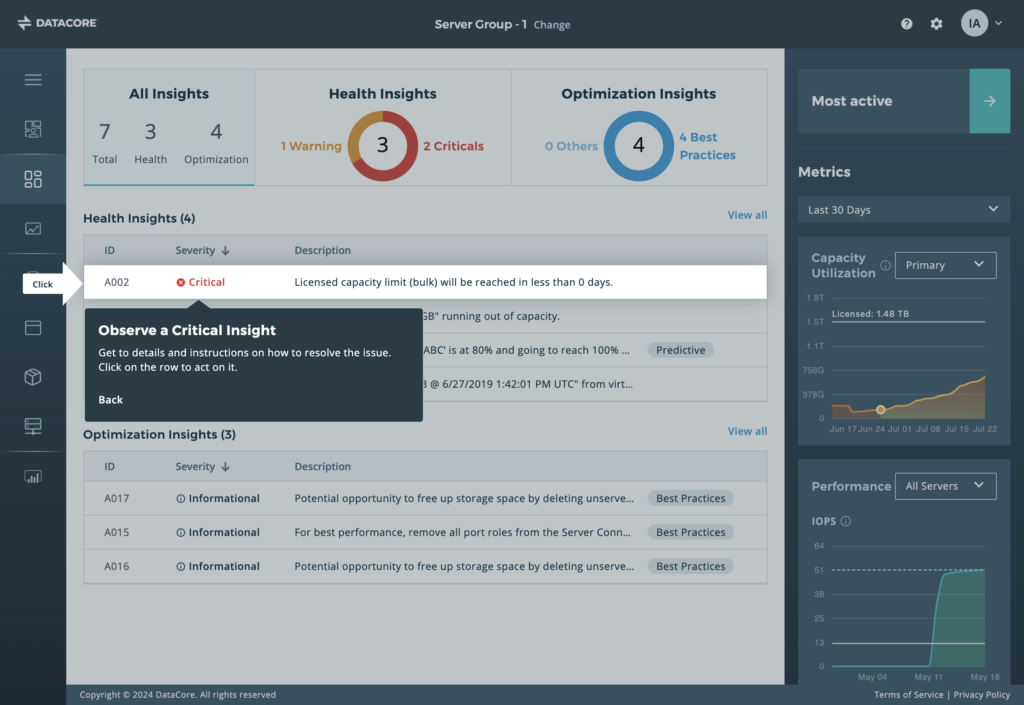
Impact
- Better Data discoverability
- Proactive solutions provided on alerts/issues shown
- Better Data protection
- Ease of use impacted better sales of the product.
- RoleResponsible for driving process from Information Gathering, Ideation, Wire-framing, Prototyping and Testing by working closely with Visual Designers to design cloud storage experience.
- ToolsUX pin, Invision.
- ShareG+LnkdFbTwPin